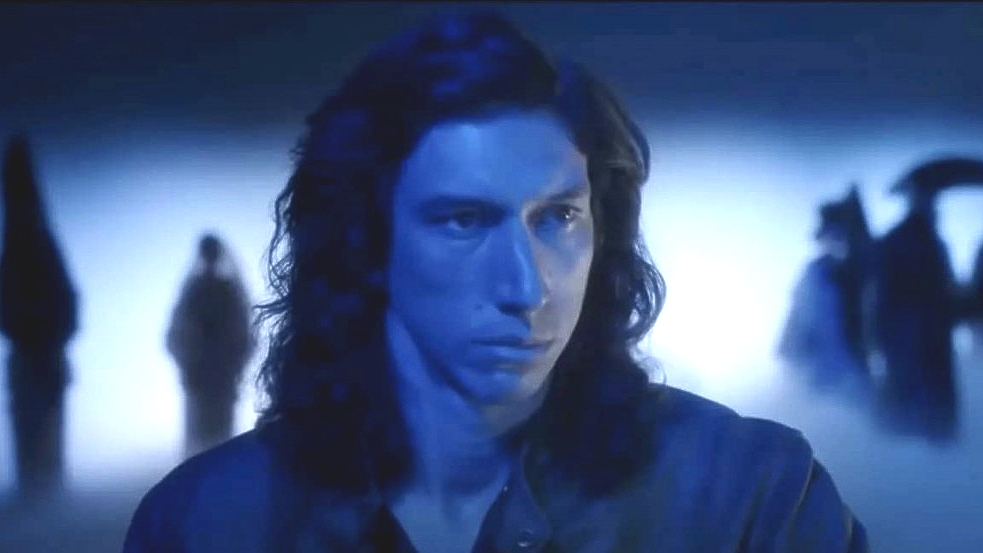Annette, a movie that received an ovation so long at the Cannes Film Festival that Adam Driver started smoking a cigarette during it, is one of the most insanely padded works of art I’ve ever seen.
A musical written by Ron and Russell Mael of Sparks, Annette opens with a song about how the movie is about to start — “So May We Start?” — which goes on for about five minutes, rhyming “So may we start?” with “it’s time to start” (arguably the only catchy song of the film). Annette, the title character, doesn’t show up until minute 41. To illustrate Adam Driver and Marion Cotillard’s characters falling in love, the two sing a song in which they repeat the refrain “We love each other… so much…” roughly 37 times.
In The Sparks Brothers, Edgar Wright introduced us (well, me) to Ron and Russell Mael, the clever and prolific songwriters behind Sparks, who famously once opened a song with the line, “I’ve got a snapshot of your Aunt Maureen.”
It’s that kind of cheeky humor and theatrical pop-rock that you’d imagine would make Sparks the ideal choice to write a musical for Holy Motors director Leos Carax. Yet nothing in Annette is as funny, clever, or catchy as the opening of “Tips For Teens.” The cleverness is all drowned out by the art; everything so puffed up, stretched out, and annoyingly repeated that even things that seem funny on paper in practice end up dull or tedious.
For instance, you may have heard that Adam Driver sings while performing cunnilingus in Annette. Which is true, sort of — he performs his half of a duet live on set, with his head between Marion Cotillard’s bare legs in a posture of pantomimed oral sex. Yet even the act of singing into a vagina comes off like just another camp musical number in a movie full of them. Carax is so busy doing art, with elaborate stage sets, green screens, and choreographed dances, that he never gets around to telling us what this movie is about. Where is this oral sex even taking place? What does it mean to the characters? What time of day? Where in the world? Annette exists only in Artland, a place where details and emotions don’t matter, only the act of being self-consciously artistic.
Driver plays Henry McHenry, a famous comedian who shadowboxes in a robe while eating bananas before performing his one-man show, “The Ape Of God.” Again, this sounds like it would be funny on paper, yet we don’t get any sense of what his act is supposed to be or why audiences enjoy him. He doesn’t seem to do anything humorous. He enters the stage in a fog of smoke, which he complains about while the crowd laughs. He either gets annoyed with, or feigns annoyance with their laughing (unclear) and asks rhetorical questions about why he does comedy. This is all delivered in Annette‘s signature style, of brief, vague declarations repeated dozens of times in song.

Cotillard, meanwhile, is Ann Defrasnoux, a world-famous opera singer who mostly sings haunting, wordless melodies onstage between death scenes. That’s about as much characterization as anyone gets in Annette, whose characters all seem like a grade schooler’s idea of “serious artist.” There’s a famous opera singer, a famous comedic thespian, and the opera singer’s accompanist, played by Simon Helberg from Big Bang Theory, helpfully introduced in a song called “I’m An Accompanist.”
When Ann and Henry fall in love through song, the only clues we get as to how they relate to each other or to the root of their attraction comes in the form of these lyrics, sung between the 37 refrains of “we love each other so much”:
counterintuitive, baby, and yet we remain.
so hard to explain it, so hard to explain…
Hard to explain, eh? Well, do you think perhaps you could perhaps try, given that this relationship is the central story element of the film?
Ann and Henry soon give birth to a daughter, Annette, who is depicted as a sinister living marionette, a papier-mache creature that looks a little like the wing gremlin in the original Nightmare at 20,000 Feet. At some point, Henry realizes that the doll baby can sing, and he takes her out on an exploitative concert tour that makes her a worldwide sensation. Meanwhile, all we, the movie’s audience, get to see of the singing doll-baby is Annette humming a haunting wordless melody while floating above the stage. This is a movie so incapable of communicating anything beyond “we’re doing art!” that it resorts to narrating itself through repetitive song.
Annette feels like a series of the broadest broad strokes, none of which got fleshed out, only embellished. It feels like the Mael Brothers had a plot outline, but rather than create any connective tissue for it, the characters simply sing the chapter headings out loud, repeating the same basic phrases over and over until they lose all meaning through semantic satiation. Leos Carax, in turn, rather than give the Mael Brothers’ outline scenes or context, just added distractions — cunnilingus! a fake baby! flying! green screens! It’s just embellishment upon embellishment until we don’t know what we’re watching anymore, other than ART.
It’s all meaningless bloat. It’s a testament to the attention spans of the Cannes-goers that they still had the energy to stand and applaud after almost two and a half hours of this. Then again, what else was there to do? Annette doesn’t give us the space to ponder its characters, to dissect its dialogue, to discuss its themes. It merely works hard at creating the appearance of working hard. What else is there to do but applaud all that work? Bravo! You did an art!
‘Annette’ is currently available in select theaters. It hits Prime Video August 20th, 2021. Vince Mancini is on Twitter. You can access his archive of reviews here.







